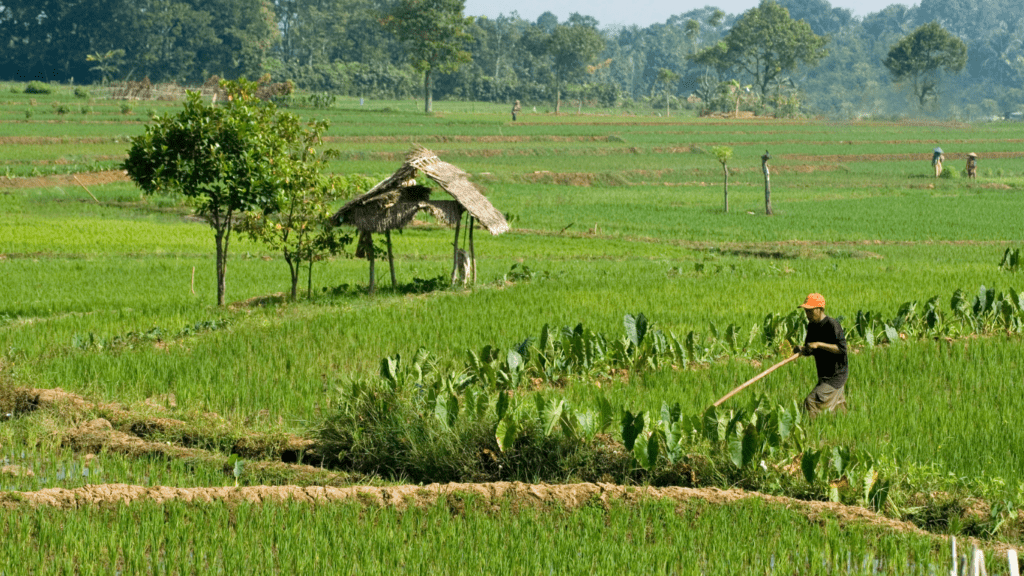Overview of the Latest Agricultural Policies
Recent agricultural policies address crucial areas like sustainability, technology adoption, and financial support. These policies aim to enhance productivity, ensure food security, and promote environmental health. I’ll break down the key policies into specific categories for clarity.
Sustainability Initiatives
Governments prioritize sustainability by implementing stricter environmental regulations. The U.S. Department of Agriculture (USDA) introduced programs promoting conservation practices, like crop rotation and reduced tillage. Incentives aim to reduce greenhouse gas emissions and improve soil health.
Technological Advancements
Policies support the integration of advanced technologies in farming. The USDA encourages the use of precision agriculture tools, like GPS-guided equipment and drone monitoring. Funding is available for research and development in biotechnology to improve crop resilience and yield.
Financial Support and Subsidies
Subsidies and financial programs provide crucial support to farmers. The USDA’s Farm Service Agency offers loans for land purchase and operating costs. Recent changes in subsidy allocation focus on smaller farms and beginning farmers to ensure equitable growth in the sector.
Trade Policies
Trade agreements impact agricultural export and import markets. The U.S.-Mexico-Canada Agreement (USMCA) includes provisions that benefit American farmers by reducing trade barriers. These policies aim to open new markets and stabilize prices for agricultural products.
Climate Change Mitigation
Policies addressing climate change lead to significant shifts. Programs focus on reducing carbon footprints through sustainable farming practices. The Climate-Smart Agriculture initiative provides guidelines to help farmers adapt and mitigate climate impacts.
Labor Regulations
New labor policies affect the agricultural workforce. The H-2A visa program allows temporary agricultural employment of foreign workers. Changes ensure fair wages and better working conditions, aiming to protect workers’ rights and improve productivity.
Recent agricultural policies, covering sustainability, technology, financial support, trade, climate change, and labor, are pivotal in transforming the sector.
Key National Regulations
Recent policies implemented by the U.S. government significantly impact the agricultural sector. These regulations aim to foster growth, sustainability, and fairness.
Federal Subsidies and Grants
Federal subsidies and grants provide essential support to farmers. The USDA offers numerous programs, such as the Environmental Quality Incentives Program (EQIP) and the Conservation Stewardship Program (CSP), which incentivize sustainable farming practices.
In 2022, EQIP allocated $1.2 billion for conservation initiatives. Additionally, the Market Access Program (MAP) helps U.S. agricultural producers promote their products abroad, which funded $173 million in 2021.
Environmental Regulations
Environmental regulations ensure sustainable agricultural practices. The Clean Water Act (CWA) mandates standards for water quality, impacting how farmers manage runoff and pesticide use.
The Food Security Act (FSA) of 1985 promotes soil conservation through the Conservation Reserve Program (CRP), which enrolled 21.9 million acres in 2021. The purpose of these regulations includes protecting natural resources and promoting environmentally responsible farming methods.
State-Level Legislation
State-level legislation continues to shape agricultural practices across the United States. Each state addresses its unique needs through various initiatives and regulations.
Unique State Initiatives
States implement unique initiatives to tackle local agricultural challenges. For instance:
- California: The Sustainable Groundwater Management Act (SGMA) regulates groundwater usage, aiming to sustain groundwater resources while countering drought impacts.
- New York: The Climate Resilient Farming program helps farmers adapt to climate change by providing funds for implementing water management, soil health, and energy efficiency practices.
- Florida: The Best Management Practices (BMP) program improves water quality by reducing nutrient runoff from agricultural lands through tailored guidelines and practices.
Regional Differences
Regional differences influence agricultural legislation and practices. These differences stem from varying climates, soil types, and crop choices:
- Midwest: Policies often focus on corn and soybean production efficiency due to the region’s reliance on these crops. Precision agriculture technologies are widely supported.
- Northeast: States like Vermont and New Hampshire emphasize dairy farming regulations to maintain farm profitability while ensuring environmental compliance.
- Southwest: Water conservation remains critical. Legislation often includes measures to optimize water use for irrigation and encourage drought-resistant crop varieties.
By understanding these state-level and regional nuances, stakeholders can better navigate the agricultural landscape and capitalize on specific opportunities each area offers.
International Policies Impacting Agriculture

International policies heavily influence agriculture. These policies shape trade dynamics, export-import regulations, and market access worldwide.
Trade Agreements
Trade agreements define market access for agricultural products. Agreements like the United States-Mexico-Canada Agreement (USMCA) and the European Union’s Common Agricultural Policy (CAP) facilitate smoother trade operations.
USMCA, for instance, eliminates agricultural tariffs between the US, Canada, and Mexico. CAP provides subsidies to European farmers, ensuring stable incomes and competitive pricing. These agreements offer predictability and shared standards, making cross-border activities smoother.
Export and Import Regulations
Export and import regulations impact the global flow of agricultural goods. The World Trade Organization (WTO) sets the framework for international trade rules, including tariffs, quotas, and trade disputes.
Countries like China impose import tariffs and quotas on specific agricultural products, influencing pricing and availability. The US Department of Agriculture (USDA) oversees regulations ensuring quality and safety of exported goods. These regulations protect both domestic industries and consumers, maintaining the integrity of the agricultural supply chain.
Impact on Farmers and Agribusinesses
Recent policies and regulations significantly affect farmers and agribusinesses. They alter daily operations, financial stability, and long-term strategies. USDA’s conservation initiatives mandate specific farming techniques. Farmers adopting these can benefit from financial incentives, but others may face challenges adapting to new methods.
Technology adoption in agriculture receives a boost through financial aid programs. These programs help farmers invest in advanced machinery, precision farming, and data analytics. However, small-scale farmers might struggle with initial costs despite long-term savings and efficiency gains.
New trade agreements like the USMCA impact market access. They create opportunities but also introduce compliance requirements. Farmers need to understand these terms to maximize benefits. For example, dairy farmers might find new markets in Canada while meeting stringent quality standards.
Climate change regulations, such as those in New York, force farmers to adopt sustainable practices. These include reducing greenhouse gas emissions and improving soil health. While beneficial for the environment, they require upfront investments in equipment and techniques, adding to operational costs.
Labor practices regulations enhance worker safety and pay but increase labor costs. For instance, stricter wage laws in states like California affect profit margins. Farmers must balance fair wages with maintaining competitiveness.
USDA export and import regulations influence global agricultural trade. They ensure product quality and safety but demand compliance, which can increase operational costs. Those exporting goods need to navigate these regulations to access international markets effectively.
Farmers and agribusinesses must stay informed about evolving regulations. This knowledge enables them to adapt, leverage financial aid, comply with trade agreements, and adopt sustainable practices. Understanding regulatory impacts ensures competitiveness and sustainability in the agricultural sector.
Future Trends and Predictions
Emerging trends in agriculture center around technology, sustainability, and policy adaptation. Increasing technology use continues to revolutionize the industry. For instance, precision farming utilizes GPS and IoT devices to optimize crop yields and reduce resource usage. This trend likely persists as newer technologies develop.
Sustainability remains a crucial focus. Current policies encourage farmers to adopt eco-friendly practices, such as integrated pest management (IPM) and no-till farming. The push towards reducing carbon footprints and enhancing soil health grows stronger, driven by both domestic and international environmental goals.
Shifts in dietary preferences and consumer awareness about food sourcing impact farming practices too. Organic farming and locally-grown produce gain popularity, influenced by consumer demand for transparency in food production.
Policy adaptation becomes key as climate change effects intensify. New regulations aim to boost climate resilience among farmers. These include incentives for carbon farming, improved water management, and increased funding for research on climate-smart agriculture. Policies may evolve to support the adoption of renewable energy sources like solar and wind power on farms.
International trade policies also shape future agricultural dynamics. Trade agreements like the USMCA and global trade tensions could significantly influence market access for American farmers. Anticipating these changes helps farmers make informed decisions about crop choices and investment strategies.
Labor remains a critical issue. Policies might adapt to address farm labor shortages, potentially through immigration reform or mechanization initiatives. These changes could ensure a stable workforce while maintaining productivity levels.
Overall, the intersection of technology, sustainability, policy, and consumer behavior predicts a dynamic future for agriculture. Stakeholders must stay informed and adaptable to thrive in this evolving landscape.



